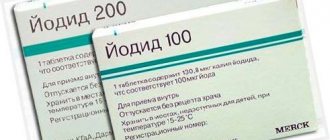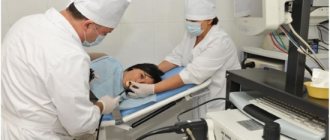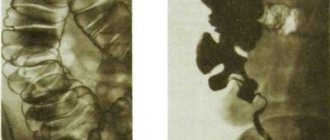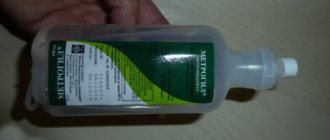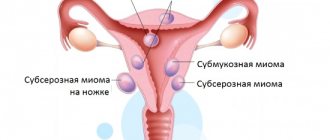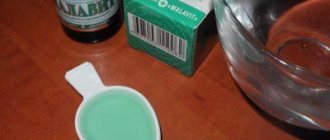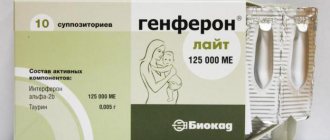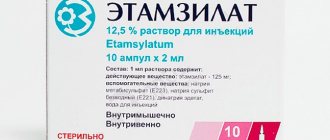The essence of the method
The term "electrophoresis" is the result of a merger of two words. “Electro” - electric charge, “phoresis” - transfer (translation from ancient Greek).
Many gynecological diseases are associated with a decrease in blood flow to the pelvic organs. This makes it difficult to deliver drugs to the site of inflammation. The goal of the physiotherapeutic method is to introduce the maximum amount of medication precisely into the affected area.
The procedure helps to avoid side effects from the gastrointestinal tract that occur during oral administration or intramuscular injections. The effect of medications on the liver and kidneys is minimized. Local administration of a pharmacological substance occurs painlessly, without damaging the skin.
Drug electrophoresis, under the influence of electric current pulses, converts medicinal substances into tiny ions. Galvanization allows you to reduce the dosage of the drug, increasing the activity of its pharmacological action.
Treatment during menstruation in women
Many doctors tend to refuse to perform procedures during menstruation, although this condition is not an absolute contraindication for electrophoresis. Bleeding, which is normal during menstruation, is not caused by an acute or purulent disease. When the treatment does not directly affect the areas of the uterus or ovaries, there is no contact of the electrodes with damaged mucous membranes.
Related articles: Treatment of arthrosis of the knee joint with physiotherapy
If the procedure is carried out through the skin, then the penetration of active substances into the tissue occurs to a depth of no more than one centimeter. Which should not cause increased bleeding or pain in a healthy body.
Another thing is that during physical therapy, unpleasant sensations caused by a physiological state or some pathologies in a woman’s body may intensify. Therefore, doctors do not prescribe physical therapy during menstruation when it comes to treating gynecological diseases, especially the ovaries.
In other cases, the decision is made jointly by the physiotherapist and the gynecologist, taking into account the individual reactions of the patient
. After all, a break of more than three days in a cycle of procedures is critical and can negate the result already achieved.
Treatment effectiveness
By enhancing blood microcirculation in the treated area, a positive effect is achieved after just a few sessions. A set of physiotherapeutic procedures promotes:
- reducing treatment time;
- elimination of painful symptoms;
- accelerating the process of tissue regeneration;
- reduction of pathogenic irritants in the diseased organ;
- removing excess fluid;
- production of biologically active substances;
- decreased muscle tone.
Galvanization is an excellent way to produce substances that enhance the activity of the immune system and restore the body's protective functions.
The process of iontophoresis
The fabric pad is soaked in the solution prepared by the doctor. The electrode connected to the current generator is fixed inside the hydrophilic material. During the session, two pads with electrodes of different polarities are used, which create a weak electromagnetic field.
In gynecology, the cavity galvanic method is often used. The medicine is injected directly into the vagina or rectum. One of the charges is placed inside, the other is fixed on the outside of the body.
The physiotherapist gradually increases the current intensity. There is no danger to the patient as long as he feels only a slight tingling sensation. If the sensations give way to burning or itching, the process is stopped immediately. Time period of sessions: 10 – 15 days. The duration of the course depends on the degree of the disease. The dosage is prescribed individually by a specialist. The age, general condition of the patient and the cause of the disease are taken into account. Before using a pharmaceutical product, you should test for an allergic reaction.
Indications for use
Scientific research has confirmed the effectiveness of the technique in the treatment of many pathological processes to which the female body is susceptible. Namely:
- complications after surgery;
- anomaly of the female genital organs;
- pathology of uterine development;
- adhesions of various etiologies;
- pelvic neuralgia;
- chronic cystitis;
- violation of the patency of the fallopian tubes;
- inflammatory processes of the pelvic peritoneum and fatty tissue;
- inflammation of the uterus and mucous membrane;
- violation of the female reproductive system;
- sexual dysfunction due to hormonal imbalance.
Basic physiotherapy procedures in gynecology
Physiotherapy has long been used quite successfully in gynecology, especially for the treatment of various chronic conditions and female infertility. Let's list the most effective ones.
Electrophoresis
Electrophoresis is a procedure that allows medications to be administered precisely into the lesion using an electric current.
To do this, use two pads, which are placed on the skin in the projection of the lesion - above and below. The top gasket is moistened with a solution of the medicinal substance. The electric current seems to “pick up” the drug ions and “carry” them to their destination, creating the maximum concentration of the activated drug in the right place.
The following substances are widely used in gynecology:
- Zinc. Zinc preparations have a good anti-inflammatory and bactericidal effect, especially in inflammatory diseases of the cervix and uterine mucosa.
- Potassium iodide has an analgesic effect and also stimulates the growth of the endometrium when it is insufficient.
- Hydrocortisone . Electrophoresis with hydrocortisone helps well with pain and adhesions, and inflammatory diseases of the appendages.
- Novocaine helps relieve pain from inflammatory processes.
- Lidaza is an excellent drug for the prevention and treatment of adhesions after inflammatory processes and gynecological operations.
- Electrophoresis with magnesium is often prescribed to pregnant women with gestosis or the threat of premature birth.
Electrophoresis should be done daily. The procedure takes about 10 minutes, usually 7-14 procedures are required.
UHF and EHF therapy
These are types of therapy with electromagnetic fields of various frequencies.
- The main effect of UHF is the warming effect, which is widely used in the treatment of inflammatory diseases: adnexitis, salpingitis, especially in chronic cases. Heat relieves pain and improves blood flow to the painful area.
- The main effect of EHF is the stimulation of cells of the immune system. When exposed to EHF, the processes of healing and tissue restoration are enhanced, and the local immunity of the female genital area is activated.
Treatment with pulsed currents
Pulsed currents or electrical stimulation is the effect of special currents on organs and tissues in order to restore or normalize their function.
In gynecology, electrical stimulation of the cervix is most often used. The essence of the technique is that special electrodes are attached to the neck, through which electrical impulses are sent at a certain frequency.
This causes activation of the feedback regulation of the functioning of the genital organs - the hypothalamus and pituitary gland. This technique is used when:
- Cycle disorders;
- Infertility with weakened ovarian function;
- Early menopause;
- Hypoplasia of the uterus;
- Preparation and stimulation of labor;
- Weaknesses of labor.
Ultrasound
The main effect of physiotherapeutic ultrasound is micromassage. The wave causes microvibrations in tissues, which improve:
- Blood flow and microcirculation.
- Reduces tissue swelling and stimulates the outflow of fluid from the source of inflammation.
- Has anti-inflammatory and analgesic effects.
- The most useful effect of ultrasound is its anti-adhesion effect. This is very important for the prevention of adhesions after acute inflammatory processes or operations. The ideal combination of ultrasound and electrophoresis with lidase in the postoperative period is to prevent adhesions.
In addition to adhesive processes, ultrasound is successfully used to treat lactostasis and mastitis in nursing mothers.
Physiotherapy with ultrasound in gynecology is very simple - special sensors are applied and moved over the lower abdomen or mammary gland for about 10 minutes for 5-10 days. There are special vaginal attachments for ultrasound machines.
Magnetotherapy
There is a device for magnetic therapy in every clinic, and many have “magnets” at home - in the form of small home appliances.
The magnetic field has the following effects:
- Improve microcirculation.
- Increases smooth muscle tone, thereby promoting uterine contraction. This effect is used in the postpartum period, as well as to stop heavy menstruation.
- It has a pronounced analgesic effect - especially with painful periods and endometriosis.
The magnetic therapy procedure is similar to that of ultrasound - a special sensor is moved along the lower abdomen for 10-15 minutes daily. Usually the course of procedures takes 7-10 days.
Laser therapy
Laser radiation is widely used in medicine. Its effects are highly dependent on wavelength and power. High-power radiation is used as an analogue of a scalpel or tissue vaporizer in microsurgery. Physiotherapeutic laser has a powerful immunostimulating effect that stimulates cell growth and renewal.
Laser irradiation of the vulva is very effective in elderly women with atrophic vulvovaginitis. Laser radiation stimulates the renewal of the epithelium of the genital organs, improves blood flow and reduces itching and other unpleasant symptoms.
In recent years, a procedure called supravascular laser blood irradiation (SLBI) has gained great popularity. This technique involves laser irradiation of large vessels - the procedure has a pronounced immunomodulatory effect to combat chronic inflammatory processes.
Hydrotherapy
Various water activities are not only pleasant, but also very useful procedures:
- Sharko's shower
- Circular shower
- Various types of baths - pine-pearl, mineral, turpentine.
These general water procedures calm the nervous system, normalize sleep, activate blood circulation, and help fight swelling. These effects are very important in pregnant women and menopausal women.
Local water procedures include various vaginal showers and baths. For them, medicinal mineral waters and various solutions of medicines are used. Such local procedures are effective for various vaginitis and cervical diseases.
Mud therapy
Healing mud has been used for a very long time to treat women's diseases. In Tsarist Russia and the Soviet Union, mud baths were created specifically for the treatment of female ailments - Kislovodsk, Saki and others. Mud contains a large amount of useful substances, minerals and bioactivators, which penetrate into tissues when mud is used externally.
In gynecology, mud tampons and lotions are widely used on the cervix and vulva for inflammatory diseases. You can also use mud applications externally - on the skin in the projection of the ovaries and uterus. This is especially effective in combination with other methods of physiotherapy - thermal procedures, electrophoresis and ultrasound.
Contraindications
To avoid undesirable consequences, the procedure is strictly prohibited if the patient:
- malignant tumor;
- cystic changes in the pelvic organs;
- skin disease;
- elevated temperature;
- disease of the cardiovascular system;
- heavy bleeding;
- low level of blood clotting;
- bronchial asthma;
- purulent lesions of the female genital organs;
- venereal diseases;
- severe diseases of the endocrine system;
- damage to the skin in the area where the pads are applied;
- pulmonary tuberculosis complicated by respiratory failure;
- increased sensitivity to electrical discharges;
- allergic reaction to the administered drug.
Pregnancy and lactation are considered not the most suitable times to use this technique.
Gynecological electrophoresis during pregnancy
During pregnancy, a woman may also need gynecological or obstetric treatment. Most medications at this time are contraindicated for internal use, so electrophoresis can be an alternative. This physiotherapeutic procedure is considered safe for a pregnant woman, since the effect of the medication occurs almost directly, without having a systemic effect. Most often, indications for electric field treatment during pregnancy are conditions such as:
- increased tone of the uterine muscles;
- threat of miscarriage;
- toxicosis;
- placental insufficiency;
- swelling due to gestosis.
Electrodes are applied to the abdomen, into the nasal passages (intranasally). Medicines are selected individually; they should not have a negative effect on the fetus.
Electrophoresis can be used at any stage of pregnancy, but strictly according to the doctor’s indications. Thus, magnesium sulfate can be prescribed in the first trimester and in the last weeks to eliminate increased uterine tone and prevent miscarriage and premature birth. For toxicosis, the doctor prescribes electrophoresis of vitamin complexes.
The woman is required to strictly adhere to the prescribed treatment regimen and consult a doctor if there are any changes in her condition.
Treatment with electrophoresis should not be carried out if a pregnant woman has:
- disorders in the blood clotting system;
- frequent vomiting;
- dysfunction of the kidneys and liver;
- gestosis accompanied by a convulsive state.
The electrophoresis procedure for gynecological diseases is highly effective, accessible and safe, provided contraindications are observed and the prescribed regimen is followed. There are a large number of positive reviews online about how this type of physiotherapy helps with problems with conception and pregnancy, dysmenorrhea and inflammatory processes, postpartum scars and adhesions. Despite the long-standing use of the electrophoresis technique, its popularity in gynecology and other areas of medicine remains at the same high level.
Reviews
Marina (Kazan): “Today I want to write about a procedure such as electrophoresis with lidase. Medicine makes new discoveries every year, but there are still time-tested treatment methods. I mean physiotherapy. Recently I had to remember them. The gynecologist prescribed a physiotherapeutic course in combination with the main treatment. After 10 days, having been tested again, I was surprised. The inflammatory process has disappeared.”
Galya (Saratov): “Several months after the termination of pregnancy, nagging pain appeared in the lower part of the peritoneum. I couldn’t sit, sometimes I moaned from painful sensations. After the examination, the gynecologist said that I had adhesions. The doctor prescribed 15 sessions of physiotherapy with lidase. I went for procedures every other day. After 7 sessions I noticed the first results - the pain symptoms disappeared, which means the adhesions began to dissolve. At the follow-up appointment, the doctor assured me that everything was fine.”
Alternative therapy
There are no exact synonyms for the drug on the pharmaceutical market. Longidaza can be replaced with a cheaper analogue: Actinohyal, Lidaza, Ronidaza. The active ingredient in the preparations is hyaluronidase. According to the instructions for medications, they are also used in the form of injection solutions, added to medicinal ointments, and used in the form of suppositories.
Unlike generics, Longidaza is characterized by a strong antioxidant effect and helps improve local and general immunity. According to recent clinical studies, a selective effect on pathologically changed lesions has been proven, while normal connective tissue does not change. It would also be advisable to use electrotherapy together with a drug in the form of suppositories - this will enhance the effect.
Please note that hyaluronidase should not be injected directly into or near the site of infection, as this increases the risk of local spread of inflammation.
To speed up wound healing, during adhesions, non-traditional treatment can be additionally used: local application of calendula flower oil, aloe extract. However, before starting therapy, it is necessary to exclude individual intolerance to plant components.
The main advantages of the technique are prolonged action and no stress on the gastrointestinal tract. This reduces the likelihood of developing side effects. The safety of electrophoresis with longidase has been confirmed by the positive dynamics in the treatment of many diseases, which allows for the possibility of its use in pediatric practice.
